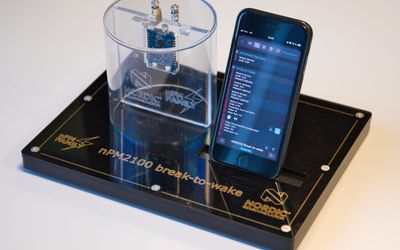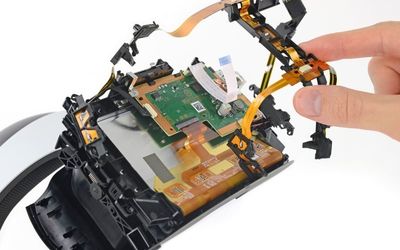IM69D128S XENSIV™ MEMS Microphone (Digital)
A low-power digital PDM XENSIV™ MEMS microphone designed for applications requiring high SNR, reliability and performance.
Technical Specifications
| Product | Audio Microphone |
| Interfaces | Digital PDM |
| Sensitivity | -37 dBFS |
| SNR | 69 dB(A) |
| AOP | 128 dBSPL |
| Supply Voltage | 1.62 - 3.60 |
| Current Consumption | 520 |
Overview
IM69D128S is a digital XENSIV™ ultra-low power MEMS microphone with a high signal-to-noise ratio (SNR) of 69 dB(A), enabling clear audio with longer battery life. IM69D128S is powered by a digital microphone ASIC and consumes a negligible current of 520 μA, cutting approximately half of the current in models with similar performance. IM69D128S cancels any audible glitches that the user can hear while switching between different power and performance profiles. It also offers ingress protection (IP57) at the microphone level due to Infineon’s new Sealed Dual Membrane MEMS technology.
The microphone is built for applications requiring high SNR (low self-noise), high reliability, and long battery life. Potential applications include headphones, TWS earbuds, augmented reality (AR), virtual reality (VR), wearables, IoT and industrial use.
XENSIV™ MEMS microphones
XENSIV™ MEMS microphones are known for their low distortions (THD) even at high sound pressure levels (SPL), low self-noise (high SNR), sensitivity matching and tight part-to-part phase, flat frequency response with a low LFRO, and ultra-low group delay. Infineon XENSIV™ MEMS microphones are used for consumer electronics with high audio-capturing functionalities. It is also used for industrial applications like predictive maintenance and security due to its adjustable power modes and compact package size.
IM69D128S is a microphone with similar features. It is a PDM (pulse density modulation) device aimed at applications that need a mix of long battery life, high signal-to-noise ratio (SNR), low microphone self-noise, and high reliability. The microphone module consists of ASIC and MEMS combined in a compact package.
IM69D128S Features
IM69D128S is RoHS compliant, Halogen-free, and supports the green initiative. The microphone consumes low current, 420 μA in power saving profile, 180 μA in low power mode, and 520 μA in a high-performance profile. It delivers a low self-noise and high SNR of 69dB(A). It is based on a Sealed Dual Membrane (SDM) technology with IP57 ingress protection at the microphone level.
IM69D128S has a high dynamic range and an acoustic overload point (AOP) of 128dBSPL. HDR is a run-time technology that changes this wide range of levels into a range that works better with the sound system's digital output. The microphone has a tight part-to-part phase and sensitivity match (± 1 dB).
A smoother frequency response is more desirable than a highly variable one, with flat being the optimum goal. IM69D128S gives a flat frequency response with an LFRO (low-frequency roll-off) of 30 Hz. The IM69D128S package is small in size (3.5*2.65*0.98 mm) and delivered in tape and reel. This packaging protects against electrostatic discharge (ESD), damage, and dust to a high degree.
For industrial applications, there is substantial battery saving, with optimum acoustic performance. The microphone results in clear audio signals even at the highest sound pressure levels. It also enables advanced audio features including ANC, audio zoom, transparent hearing, and beamforming.
Applications
IM69D128S is perfect for applications including Active Noise Cancellation (ANC) headphones and earphones, true wireless earbuds, high-quality audio capturing over-ear headsets, devices with Voice User Interface (VUI), and hearing enhancement devices.
Other potential applications include smart speakers, smartphones and mobile devices, laptops and tablets, home automation, conference systems, IOT devices, cameras and camcorders, and industrial or home monitoring with audio pattern detection.








